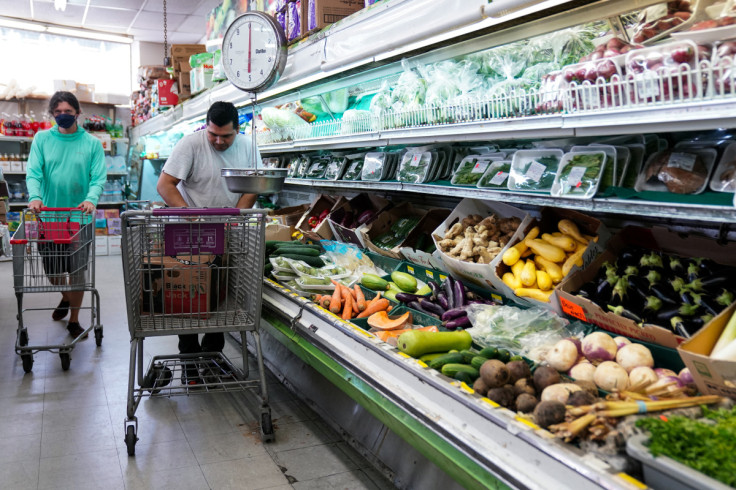Americans May See Effects Of Cooling Inflation In 2023, But Only 'Rate Of Increase' Is Slowing
Inflation has been cooling in recent months, but it will likely still be a while before Americans start actually seeing and feeling the effects when it comes to their everyday spending.
Though Consumer prices did fall 0.1% in December, marking the biggest monthly drop in almost three years, and shipping costs have started to drop, the effects will take time before they drop down to consumers.
"There are some prices, some goods for which prices are falling," Mark Zandi, chief economist of Moody's Analytics, told CNBC. "But broadly, prices aren't falling. It's just that the rate of increase is slowing."
The rate of increase has indeed slowed in several areas, with shipping costs now lower, and prices on some goods starting to go down—but others have still seen increases, with eggs in particular doubling recently, while cereals and bakery items have also climbed 16.1%. Grocery executives have also warned that food prices aren't expected to drop anytime soon.
"The increase is starting to moderate a little bit," Kroger CEO Rodney McMullen told CNBC. "That doesn't mean you're going to start seeing deflation. We would expect to see inflation in the first half of the year. Second half of the year would be meaningfully lower."
As for why these prices may not seem to be going down in a meaningful way for consumers, parts of the supply chain they don't necessarily see are partly to blame. While freight costs and shipping have eased, they're still up from a year ago, and many companies have also set long-term contracts on prices they pay for certain items as a means of protecting against unpredictable spikes in prices. Labor shortages are also contributing to still elevated prices in some sectors as well, in addition to things like an outbreak of Avian flu, which has led to a massive increase in the price of eggs.
In addition, companies that provide packaged goods have still been participating in practices like "shrinkflation," where they have increased prices and reduced package sizes in an effort to catch up on their own profit margins following the squeeze of the early COVID-19 pandemic. Prices are still expected to increase in some areas as well, with Procter & Gamble planning to increase their prices on products like diapers and paper towels again in February.
Because of these factors, it will be a while before Americans start to really see the effects of any deflation in costs, though retailers introducing lower-priced private bands and shoppers purchasing them, could help ease some of the pain before that point. In addition, Zandi told CNBC that if consumers started choosing these options more as they try to stretch their dollars, it could send a message to the companies that still intend to raise prices and force a faster turnaround.
"Businesses do respond to shoppers," he said. "If consumers are price-conscious, price-sensitive, that'll go a long way to convincing businesspeople to stop raising prices and maybe even provide a discount."
Of course, some Americans are still eager for other ways of easing the pressure they feel, with 63% of Americans polled in November stating that they supported an inflation-induced fourth stimulus check from the Federal Government—even though experts have warned that the extensive checks provided during the pandemic also played a role in current inflation, as they led to an increased demand from consumers when the supply chain was already choked.

© Copyright IBTimes 2025. All rights reserved.





















